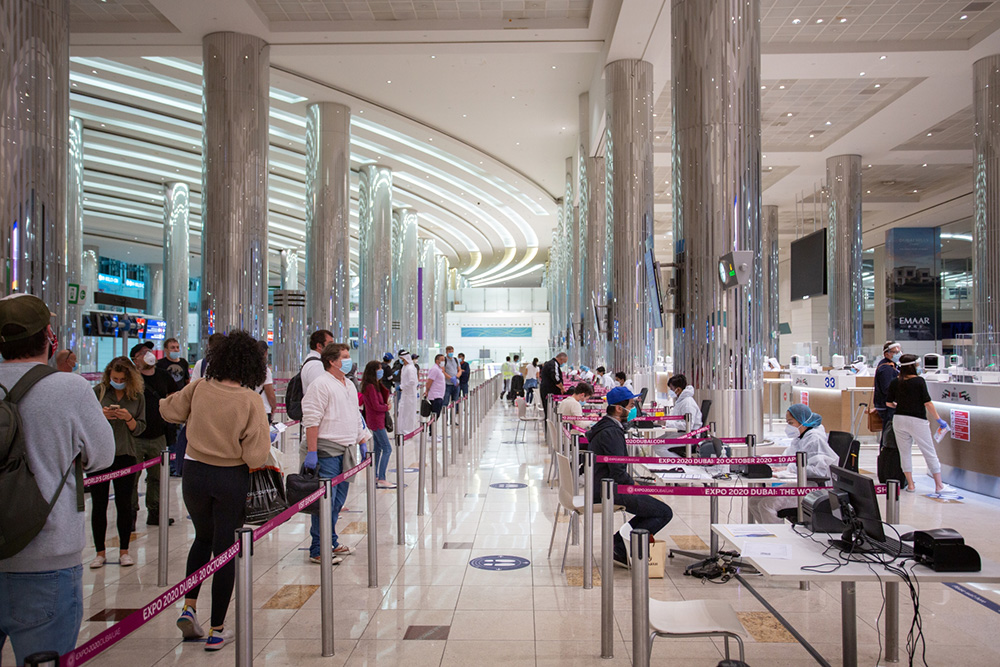If you’ve ever flown business class or first class, you’ve almost certainly received an airline amenity kit. These little kits contain items that make flying more comfortable. But where did these little kits come from, and how did they become such a standard part of commercial flying? We’ve taken a look at everything you need to know about airline amenity kits.
The first onboard kits
The first-ever amenity kits were very different from the luxury products we know today. Way back in the 1920s and 1930s, passenger amenity kits included cotton balls to muffle the sound of the engine. Airlines also gave out chewing gum to help even out air pressure and stop ears popping.
As flying became more popular and overnight flights become more common, pillows and blankets were the next editions. However, it wasn’t until the 1950s that amenity kits became more about promoting comfort than preventing discomfort.
The next additions to most airline amenity kits were shaving kits with a pack of double-edged blades. Back then, taking separate razor blades onboard was totally acceptable. Over the coming decades, kits grew bigger and more luxurious, offering face creams, lip balms, toothpaste, and other toiletries.
Some kits also included small sewing kits. Again, needles were not an issue at the time. Usually, these were offered on long transatlantic flights connecting major cities like New York, London, and Paris.
Major influences on kits
As the first amenity kits became more popular, the major influence was luxury: the more luxurious and stylish a kit, the more attractive it was. Airlines began working with cosmetic and beauty brands to provide luxury products.
Some even worked with fashion designers such as Salvatore Ferragamo and Christian Lacroix to design pajamas, eye masks, and even the kit bags themselves.
Of course, security also became a major influence on kits. Suddenly items like nail files, razors, and needles were no longer handed out. Matches also became redundant when smoking was banned on flights.
More recently, environmental concerns became a key influence on what you could expect to find in an amenity kit. All the additional plastic packaging was removed, and airlines began to think about what products were actually useful. Different kits were designed depending on which class you travel, your destination, and the time of your flight in an attempt to provide people with tailored kits they would actually use.
Will kits ever be the same?
Until last year, the aim of the game when it came to amenity kits was luxury—the more well-known and popular the brands in the kit, the better. However, with COVID-19 introducing new health and safety concerns, the amenity kits as we know them may have gone forever.
Showcased in an article on dmarge.com, Air Canada’s new amenity kits show exactly how much kits have changed in the past year. Although you’ll still find some luxuries, Air Canada’s new CleanCare+ kits focus on keeping everything clean. The customer care kit includes a face mask, bottled water, hand sanitizer, and disinfecting wipes.
Although it is unlikely that amenity kits will turn into sanitizing kits forever, they have certainly undergone a major transformation in the past year. It’s likely many airlines will include sanitizing products in their kits in the future.
About Guide2Uganda
Guide2Uganda (www.guide2uganda.ug) is the most comprehensive source of travel information about Uganda that exists on the web, with more content on its cities & towns, accommodation, attractions, events, museums and galleries than any other online guide that currently exists for Uganda; as well as being a dynamic travel news and events driven site with fresh content added daily.
According to WeFollow & Peer Index (that measure online influence), we are among the most influential online media organizations in Uganda. Guide2Uganda was also awarded ‘’Best Destination Website in Uganda’’ by Jumia Travel Uganda in the 2018 Africa Travel Awards.
Share your travel stories & photos with the world via email: info@guide2uganda.ug




